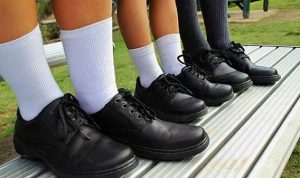 As a podiatrist we understand selecting the correct shoe for your foot type can be a difficult task.
As a podiatrist we understand selecting the correct shoe for your foot type can be a difficult task.
And even more complex when wanting a good shoe to compliment orthotics, or medical issues like diabetes. With a multitude of brands and types of shoes available it can become confusing to find one tailored for you.
As health Care Professionals, podiatrists are qualified to evaluate and identify foot problems, as such we can recommend the correct foot wear to suit your needs.
Patients often ask me “what brand do you recommend?” I reply that it isn’t about a brand which is best, but what shoe is best suited to your needs.
I like to approach patients about foot wear advice by giving them key features to look for in a shoe, then allowing them to make their own choice on brands. I find this point particularly valid in children, basically because if they don’t like the look of the shoe they simply will not wear them.
What’s best to look for in a runner?
Cushioning
A shank and firm midsole, this provides stability for the midfoot. This stability is essential as all the weight of the body pass’s through it. Without stability the forces will collapse the shoe and therefore result is severe straining of the foot.
For patients who wear orthotics having a shank in the shoe it will assist the orthotic in achieving the best results and give you more stability. It also will ensure that your footwear should last longer. Often shoes that don’t possess a shank are made of a very soft EVA and compresses at a more rapid rate and wear quickly.
Support
A firm heel counter, this is the back of the shoe that holds your rear foot (heel and ankle) in place. This is designed to keep your heel stable as it makes contact with the ground when either walking or running. There should be enough depth to enable the foot not to feel like its slipping in the heel. Again, a weak or flexible heel counter will offer poor stability.
Shape
Suitable toe box, (depth of the front of the shoe). This allows the forces to travel through the foot and shoe while preventing rubbing of the top of the toes. The toe pitch should be of suitable distance from the ground to allow clean propulsion, while not putting undue stress on the Achilles.
Neutral last, (a Last can be curved, semi-curved, or straight) The significance of the last shape is that curve lasted shoes tend to be lighter and less supportive while Straight-lasted shoes are heavier and provide more support under the arch.
Shoes with a neutral last are the best to compliment your orthotics, the orthotic is providing you with the necessary correction and balance with in your foot.
Feel
Average shoes lifespan, the average life of any shoe is either 12 months or 1000 km. So, it is important to not to disregard the importance of checking your shoes, and if necessary replace when required.
Finally, there is no one brand better than the other. Many shoe brands offer different features, catering for different foot types. And the market is continually changing, so the same shoes from year to year may have significant changes to it.
What we would like you to keep in mind is that the shoe must complement the person to achieve optimal performance and skeletal alignment.
Sound foot structure is the foundation for a healthy life.
